Ocean Songs are a fantastic way to bring the wonders of marine life into your kindergarten music classroom. As a music educator, I’ve always found that thematic units captivate young learners, and an ocean theme is particularly engaging. Over the past few weeks at payoffsong.com, I’ve been exploring various ocean songs and underwater-themed games with my kindergarten students, and I’m excited to share some of the activities that have been incredibly successful.
For kindergarten, the key is to keep activities concise and repetitive. We introduce a song or poem, revisit it the next day with actions, then transform it into a sung piece, and finally, add a game. This incremental approach allows for deep learning and enjoyment without overwhelming young minds. Don’t be deceived by the brevity of each activity described below; we revisit and build upon these ocean songs throughout the week, adding layers of engagement each time.
Charlie Over the Ocean: A Classic Echo Song with a Splash of History
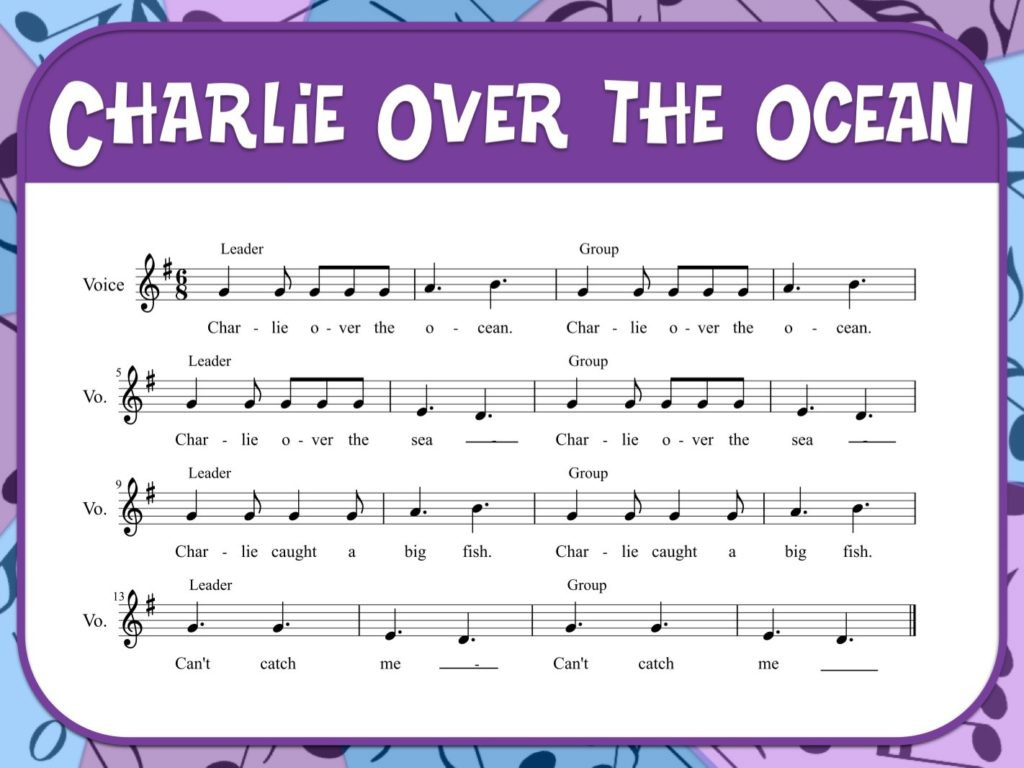 Charlie Over the Ocean sheet music.
Charlie Over the Ocean sheet music.
“Charlie Over the Ocean” is a delightful echo song that’s perfect for introducing kindergarteners to the lower “sol” note. Its simplicity makes it easy for children to grasp, and it opens up a great opportunity to discuss homophones, differentiating between “see” and “sea”—a subtle language lesson that classroom teachers appreciate! Beyond its musical and linguistic merits, “Charlie” boasts a rich history as a game song within the African American community. This heritage makes it a song that children might recognize from their families, creating a wonderful connection between home and school. Imagine the joy of a child sharing this song with parents, grandparents, or other relatives who might recall playing the game in their own schoolyards.
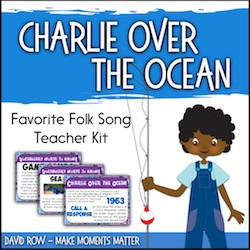 Charlie Over the Ocean Song Teacher Kit
Charlie Over the Ocean Song Teacher Kit
The game itself is wonderfully simple, reminiscent of “Duck, Duck, Goose.” The designated leader sings the call-and-response melody while walking around a circle of seated children. At the lyric “can’t catch me,” they tap someone and then take off running! If the tapped child fails to catch the singer before they reach the empty spot in the circle, the runner becomes the new song leader.
I particularly appreciate how this game empowers the song leader. One student takes the spotlight, singing the solo melody while the group echoes the response. This leadership role encourages confidence and provides an opportunity for individual expression within a group setting. From a teacher’s perspective, the game is also excellent for informal assessment. The solo singing, tied directly to the game, motivates even shy children to participate. For those who are hesitant, singing along with them during their turn provides gentle encouragement and builds their confidence to sing independently. The game naturally encourages participation and makes assessment feel organic and fun.
Fish, Fish, Little Fish: A Whimsical Song for Sol, Do, and La
A few years ago, I spontaneously created “Fish, Fish, Little Fish” needing a simple ocean song that reinforced the solfege syllables sol, do, and la. This little tune quickly evolved into a beloved circle game among my kindergarteners. It’s now a classroom favorite, especially during “Shark Week” or anytime we explore ocean songs.
You can watch a LIVE Facebook Video here where I demonstrate how I teach this song!
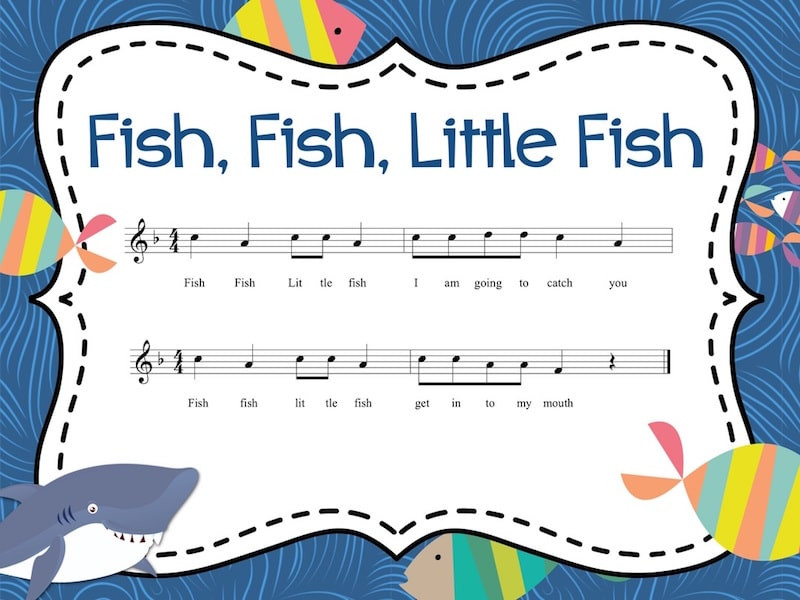 Fish Fish Little Fish Song – Sheet Music Notated in F but I usually sing in D.
Fish Fish Little Fish Song – Sheet Music Notated in F but I usually sing in D.
We begin by echo singing the song phrase by phrase, gradually piecing together the entire song. Initially, I focus solely on teaching the melody and lyrics, without visual aids. This allows the children to concentrate on the auditory aspects of the song. We learn it in a circle, and then I introduce the game element. We discuss the lyrics and encourage the children to consider who might be singing. Eventually, they realize it’s the shark, singing about eating the little fish, which they find quite amusing! This realization often marks a natural stopping point for the first day, or we might continue by…
Introducing finger puppets! I bring out a set of colorful fish finger puppets (more on where to find these later). We discuss the variety of colors and the concept of “Get what you get, so don’t be upset,” a kinder, gentler version of the common phrase. Each child receives a puppet and sings the song to their fish. At the end, we playfully pretend to “chomp” the puppets, with gentle reminders about keeping them out of our mouths (a necessary caution in kindergarten!). From there, we might explore vocal dynamics, imagining the fish swimming up and down with our voices, or revisit “Charlie Over the Ocean” using the fish puppets. Depending on time and student engagement, we might move on to the circle game variation…
For the circle game, children sit in a circle while I don my shark hat and grab my guitar. Playing a simple D and A7 chord progression, I walk around the circle as we sing. During the lyrics “Get into my mouth,” I add a dramatic “CHOMP!” sound at the end of the phrase. We talk about how sharks sometimes circle their prey before eating. So, we sing again, and I walk around with my guitar. On the “chomp/shark bite” at the end, I lean over and playfully “bite” just above a student’s head. That child then stands up and becomes the new “shark.”
We repeat the song, and the new shark gets to “chomp” another child. This continues until everyone is standing in a line, forming a “shark chain.” The last child to be “bitten” either gets to “bite” me or receives a special classroom job as a reward for being the last one chosen. The “shark bites” inevitably generate lots of giggles and excitement!
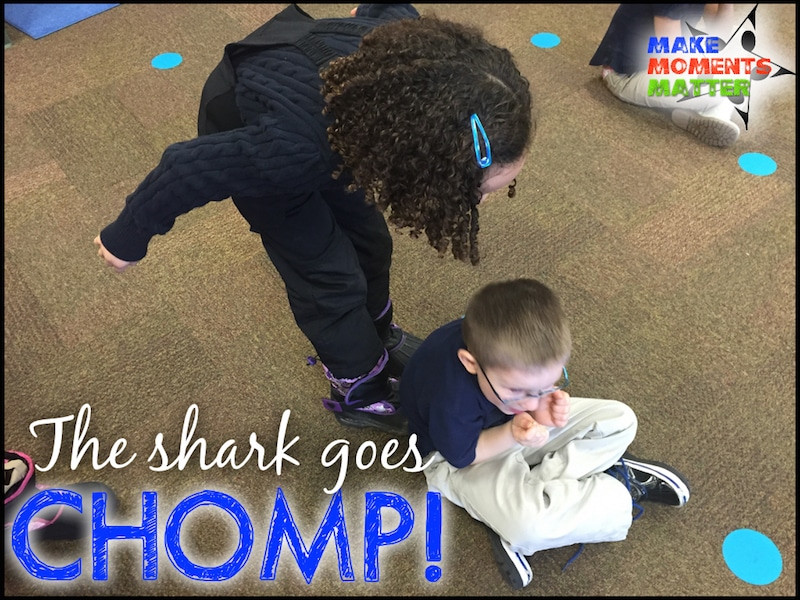 Two Children
Two Children
Two kindergarten students joyfully participate in a shark-themed ocean song game, showcasing the fun and engaging nature of musical learning.
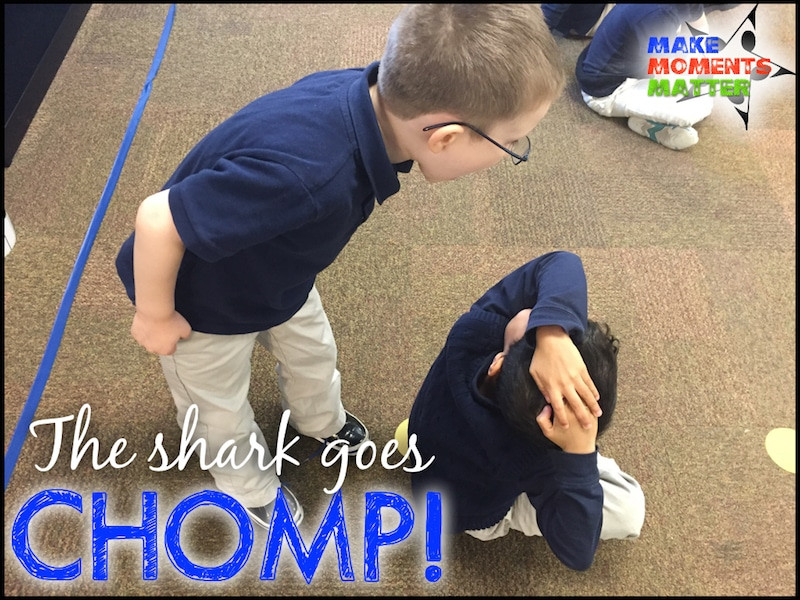 Two Children
Two Children
Laughter and excitement fill the air as kindergarteners engage in an interactive ocean song, promoting social interaction and musical enjoyment.
On subsequent days, we might incorporate visual aids I’ve created for the song. This set includes beat charts for rhythm exploration, solfege syllable identification activities (introducing “la”), and a simplified Orff arrangement for bass xylophones and glockenspiels. There’s also a section for rhythmic improvisation games. I typically select just one or two of these activities at a time, as the complete set offers too much content for a single lesson. In fact, I often introduce the song in kindergarten and revisit the Orff arrangement in first or second grade. If you’re interested in the visual set with all the extras, you can find it here.
1 2 3 4 5, Once I Caught a Fish Alive: Endless Verses and Animal Fun
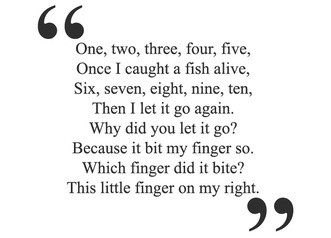 Text for the poem
Text for the poem
“1 2 3 4 5, Once I Caught a Fish Alive” is another wonderfully simple and adaptable ocean song for kindergarten. Its open-ended structure, allowing for infinite verses and animal substitutions, makes it incredibly versatile and fun. You teach it phrase by phrase, starting with the basic verse about catching a fish. Then, the song naturally transitions into a call-and-response format for the next part. You ask the children why they let the fish go, and they respond that it bit their finger. The trickiest part comes with the final phrase, specifying the “right” finger. Distinguishing right and left can be challenging for young children, so you can either dedicate time to practicing right and left or simply allow them to hold up any pinky finger and call it good – the focus is on the fun and the song, not perfect right/left identification!
Once the basic song is learned, the real fun begins! You can revisit it anytime and substitute different sea creatures for the fish. One day it’s a fish, the next it might be a crab, an eel, a shark, or an octopus. You can let the children choose the animals, fostering their creativity and preferences, or select animals yourself for specific learning objectives. I purchased a fantastic set of sea life clip art a few years ago, printed it on cardstock, and laminated it for durability.
In class, I let children come up and choose an animal card from a folder. We then sing a verse incorporating their chosen creature. This activity was particularly beneficial when I taught in a school with a large English Language Learner population. It broadened their vocabulary and built confidence as they stood up and selected an animal. Providing pre-printed pictures eliminates the cognitive load of recalling an animal and translating its name, making it more accessible for language learners. Writing the animal names on the back of the cards further reinforces vocabulary development. Here’s a link to the clip art pack I used if you’d like to create a similar activity!
While there’s a YouTube video linked in the original post, I teach this song using a Sol-Mi interval, which differs from the video’s melody. This discrepancy can sometimes confuse children, but it also provides a valuable opportunity to discuss musical variations and interpretations.
Puppets: Making Ocean Songs Even More Engaging
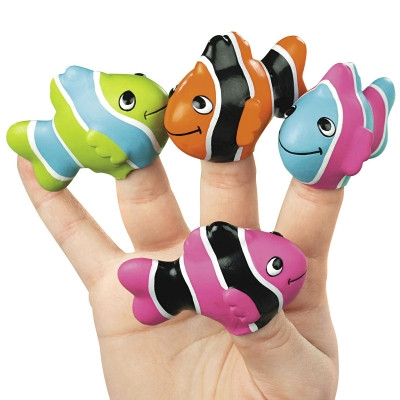 Colorful Clown Fish finger Puppets Click to enlarge. Colorful Clown Fish finger Puppets Click to enlarge. |
Puppets are an invaluable tool for engaging young children in almost any activity, and ocean songs are no exception! As mentioned earlier, finger puppets are perfect for individual interaction during songs like “Fish, Fish, Little Fish.” A colleague recommended these durable and easy-to-clean rubber finger puppets, and I’ve found a class set to be a worthwhile investment. You can find a link to these finger puppets here. |
|---|
Colorful clownfish finger puppets, ideal for engaging kindergarteners in ocean-themed songs and activities.
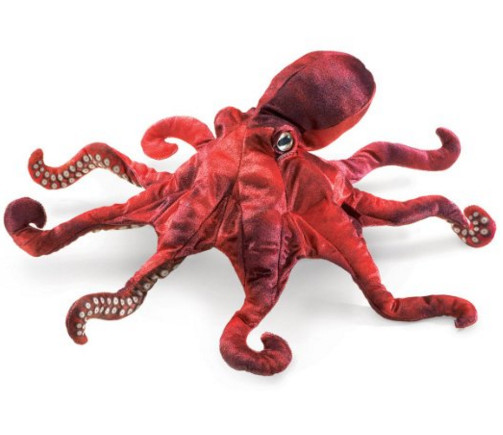 Octopus hand puppet Click to enlarge. Octopus hand puppet Click to enlarge. |
For larger puppet interactions and storytelling, hand puppets are fantastic. I’ve been admiring this octopus puppet for some time, envisioning it as a perfect companion for an ocean-themed kindergarten program. It could be a wonderful helper in leading songs and captivating young audiences. Explore the details of this octopus puppet here. |
|---|
A detailed octopus hand puppet, perfect for storytelling and enhancing engagement during ocean song lessons.
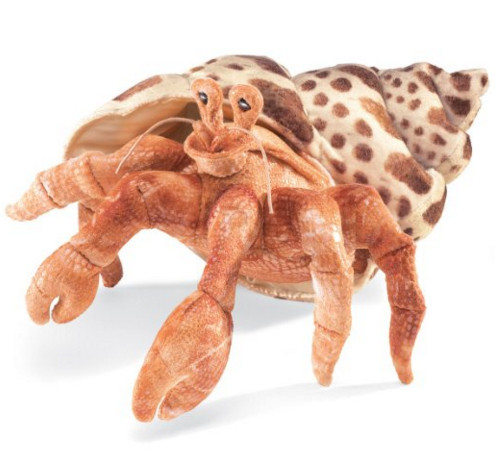 Crab Hand Puppet Click to enlarge. Crab Hand Puppet Click to enlarge. |
My crab puppet, “Shelly,” is a regular guest in my classroom, helping me teach many of these ocean songs. Shelly introduces ocean life to the children, talks about the seabed, and helps lead songs and maintain attention. Shelly was rescued from an old, discarded math curriculum, proving that classroom treasures can be found in unexpected places! While Shelly serves her purpose well, I’m definitely considering upgrading to this charming Folkmanis crab puppet. Check out the Folkmanis crab puppet here. |
|---|
A Folkmanis crab hand puppet, a durable and engaging tool for teaching ocean songs and marine life concepts.
Let me clarify – I’m not sponsored by Folkmanis puppets! I simply find their puppets to be exceptionally well-made, durable, and engaging for children, making them a worthwhile investment for educators. Their quality and intricate designs consistently impress. Folkmanis, if you’re reading this, feel free to reach out! Outfitting my classroom with your puppets would certainly inspire some dedicated, sponsored blog posts!
More Resources to Enhance Your Ocean Songs Unit
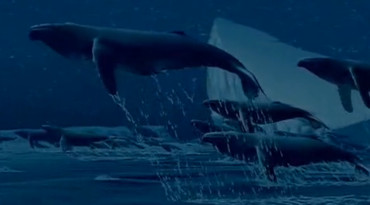 Flying Whales from Fantastia 2000
Flying Whales from Fantastia 2000
To culminate our ocean songs unit, I often show the “Pines of Rome” segment from Disney’s Fantasia 2000 DVD. Most will recognize it as the breathtaking scene with the flying whales. Kindergarteners are captivated by this visual and musical experience, which then leads to discussions about whales and music appreciation. My philosophy on using videos in the classroom is that they should enhance learning and expose children to quality content. This video clip introduces them to classical music in an accessible and engaging way, expands their understanding of whales, and sparks conversations about fantasy versus reality. Plus, showing a ten-minute clip is a cost-effective way to expose children to high-quality art and music compared to the logistics and expense of live performances. You can find the Fantasia 2000 DVD here.
A couple of years ago, I attended a workshop led by Lynn Kleiner and was introduced to her wonderful book, Songs of the Sea. “Larry the Lobster” and “Sandy Sand” from this collection have become staples in my classroom. “Sandy Sand” is particularly effective for introducing egg shakers and channeling those end-of-day kindergarten wiggles! Songs of the Sea is packed with engaging ocean-themed songs and includes a fantastic accompaniment CD, making it a valuable resource for any music educator. Explore Lynn Kleiner’s Songs of the Sea here.
I hope these ocean song ideas inspire you to dive into a fun and educational marine unit with your kindergarteners. Please feel free to pin any images for future reference. And if you have other engaging ocean song ideas for young learners, please share them in the comments below! I’m always eager to expand my repertoire and learn from fellow educators.
If you enjoyed these ocean song ideas and want to stay updated on new content and resources, be sure to subscribe for updates!

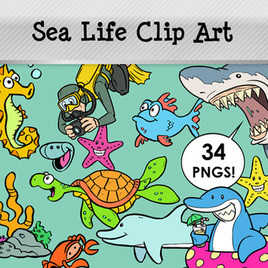 Sea Life Clip Art Set
Sea Life Clip Art Set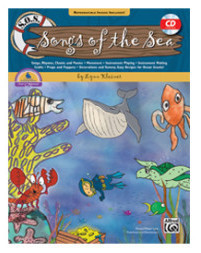 Lynn Kleiner
Lynn Kleiner